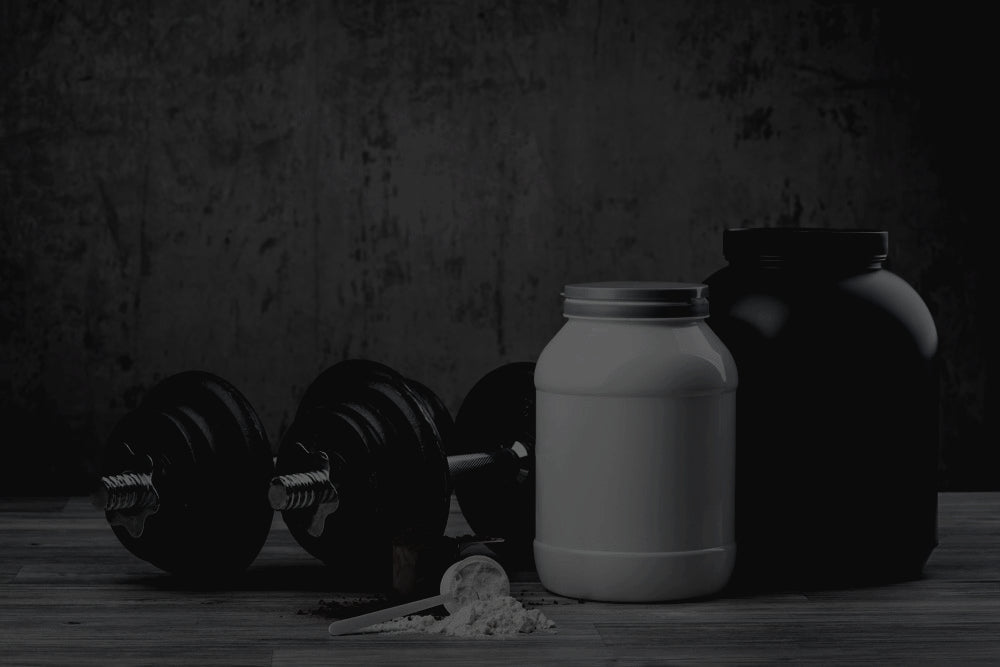I mentioned to my mother the other day that I had been doing some research on creatine, and her reaction was emphatically fearful. Before I even finished telling her about it, she blurted: “You’re not using creatine, are you?”
I laughed and asked her why her tone sounded so scared.
“I don’t like the idea of putting things into your body like that,” she said.
“Things like what into my body?” I asked
“You know, like steroids, you never know what the long term side effects will be. What if you get drug tested? Is creatine a banned substance? What is it anyway?” she asked, slowly revealing her ignorance.
“Oh mom,” I said and then promised to send her the links to Part 1, Part 2, Part 3 and Part 4 of Understanding Creatine for the Layman.

THE TRUTH IS, THIS POWDER IS PROVEN TO BE ONE OF THE SAFEST, MOST EFFECTIVE SUPPLEMENTS ON THE MARKET TODAY
Even though creatine is one of the most well-researched, peer-reviewed supplements in the world that, time and time again, has proven to be a safe, effective—and legal—performance enhancer for athletes, people continue to be misled into believing various creatine myths.
Common myths can essentially be broken into two groups of people: First, there is the group that is scared of taking creatine. These people usually believe creatine is dangerous, a banned substance, even.
Then there is the second group: These people are often creatine advocates; however, they have been tricked into believing other kinds of myths—myths that are often perpetuated by misleading marketing campaigns.
Let’s take a look.
Top Five Fear Myths
- Creatine is a banned substance, a steroid!
- Creatine is for bodybuilders only (check out what it can do for endurance athletes!)
- Creatine can cause kidney problems, cramping, dehydration, electrolyte imbalance—among a host of other health problems
- I’m going to gain weight and retain excessive amounts of water
- I can get all the creatine I need from my food
Top Five Marketing Myths
- A loading phase is necessary for success
- Cycling on and off creatine will provide me with the best results
- The “new” kinds of creatine are better
- Caffeine stops creatine working as well
- I need sugar with my creatine
Let's address the fear myths first.
FEAR MYTHS
1. Myth: Creatine is a banned substance, a steroid!
Truth: As we explained in Part 1, creatine is produced naturally in the body—the furthest thing from a synthetic steroid, and it is also found in fish and meat. In terms of it being a banned substance, it is certainly not. It is legal for both amateur and professional athletes. It’s not banned by the NCAA, nor is it banned by the International Olympic Committee (IOC). And from the NFL to the NBA to the CrossFit Games: Professional athletes of all kinds supplement with creatine.
2. Myth: Creatine is for bodybuilders only
Truth: Although the bodybuilding industry was the first one to really embrace creatine as a supplement (Read more about this in Part 2) creatine is effective for all high-intensity, strength, speed and power-based sports.
Not only does creatine increase maximum power and performance during high-intensity anaerobic training by up to 15 percent, some studies also suggest creatine helps speed recovery time after an injury. And, some even more recent studies also suggest creatine might even be helpful for endurance athletes.

ALTHOUGH CREATINE HAS BEEN PART OF BODY BUILDING CULTURE SINCE THE EARLY 1990s, ALL KINDS OF ATHLETES—PROFESSIONAL AND AMATEUR—USE IT TODAY
3. Myth: Creatine causes kidney problems, cramping, dehydration, electrolyte imbalance, among a host of other health problems
Truth: If you’re healthy, the science says creatine won’t cause kidney or liver damage. There have been anecdotal reports of kidney issues when supplementing with creatine, but these incidences have proven to be circumstantial. In one instance, for example, a man with a pre-existing kidney disease started taking creatine, which aggravated his health issues. A French sports newspaper then ran a story saying creatine is dangerous for the kidneys. The more accurate rule is: If you’re healthy going in, you have nothing to worry about.
And in another study published in 2002 that looked at football players who had been using creatine between 2 and 5 years, didn't find any markers of renal or kidney stress.
4. Myth: I’m going to gain weight and retain excessive amounts of water
Truth: You might gain a bit of weight. But generally not that much much. Most studies suggest body mass might increase by 1 to 2 kg. Usually this weight gain will happen in the first week of supplementation, mostly due to water getting pulled into your muscles along with the creatine. As for water retention, this usually happens if you do a loading phase with a higher dose of creatine. If you just start supplementing with 5 g of creatine per day, you likely won’t retain much water. The exception might be if you buy cheaply-manufactured creatine with a higher sodium content, where the sodium, not the creatine, causes you to retain water.
If you're an endurance or hybrid athlete, you can overcome the small amount of weight gain you may experience by strategically cutting out creatine in the time leading up to a competition. Check our our article discussing how to use creatine to improve your race-day performance for more on this.
5. Myth: I can get all the creatine I need from my food
Truth: Are you into eating 10 cans of tuna in a day? Or a 26-lb. turkey? If your appetite condones that kind of volume, you might get enough creatine from your diet. But most of us don’t want to eat an entire turkey ourselves. Or 10 cans of tuna for lunch. Something else to consider when it comes to creatine in fish and meat is raw versus cooked. Cooking can reduce creatine levels by up to 92%.
The point: You’re not getting enough creatine from your diet. The average person rarely gets more than 1 g of creatine from his diet each day. It’s much easier to throw back a scoop of Blonyx in a protein shake after a workout.

DO YOU REALLY WANT TO EAT 10 CANS OF TUNA FOR LUNCH TO GET YOUR 5 GRAMS OF CREATINE?
MARKETING MYTHS
1. Myth: A loading phase is necessary for success
Truth: Although some athletes load up with 10-20 g of creatine, scientists at St. Francis Xavier University in Nova Scotia say when you take this much creatine, much of it is excreted—meaning it never gets used by the body. In other words, if a 220-lb. man consumes 10 g of creatine, almost half of it—4.6 g—gets wasted. Most research shows that a lower dose of creatine—5 g/day—is the most effective dosage, and that the same results can be achieved without a loading phase. Two scoops of Blonyx contains exactly 5 g of creatine.
Learn how to use creatine to get the best benefits here.
 TAKE ONE SCOOP OF BLONYX TWICE A DAY AND ACHIEVE THE SAME RESULTS YOU WOULD WITH A LOADING PHASE
TAKE ONE SCOOP OF BLONYX TWICE A DAY AND ACHIEVE THE SAME RESULTS YOU WOULD WITH A LOADING PHASE
2. Myth: Cycling on and off creatine will provide me with the best results
Truth: Like the loading myth, contrary to popular opinion, cycling on and off creatine doesn’t lead to better results. Instead, creatine should be taken consistently, since as this position stand published by the International Society of Sports Nutrition suggests, most of creatine’s benefits occur once a saturation point has been reached. Furthermore, to date, not a single research study has demonstrated that cycling on and off creatine is beneficial.
3. Myth: The “new” kinds of creatine are better
Truth: As we revealed in Part 3, the only type of creatine with a proven research record is creatine monohydrate. Creatine companies trying to sell their product, though, will do anything to convince the consumer their effervescent, liquid or chewable “new” form of creatine—be it creatine malate or creatine HCL—is better than the well-reserached and safe creatine monohydrate. Science, on the other hand, supports creatine monohydrate.

4. Myth: Caffeine stops creatine working as well
Truth: This myth is based on an early research study showing that taking massive doses of caffeine along with creatine can negate creatine’s effect. This study is flawed, though, in that the doses of caffeine in the study were unusually high— chugging 4 espressos high. The truth is you don’t have to stop drinking coffee when taking creatine. In fact, as long as you’re properly hydrated and don’t overdo it, research published in the International Journal of Clinical Pharmacology and Therapeutics suggested caffeine can actually help improve the uptake rate of creatine. For a detailed look at caffeine, check out our article discussing how caffeine improves your athletic performance.

GO AHEAD, HAVE YOUR MORNING LATTE!
5. Myth I need to take carbohydrates with my creatine
Truth: It’s true that you should avoid taking creatine on an empty stomach as it can cause cramping, but the notion that you need to take creatine with an insulin spike producing carbohydrate is unfounded. Where it may increase absorption speed a little, you will easily absorb more than 99% of the creatine you take regardless of the sugar you might ingest with it. Newer research even suggests a consuming a protein shake take, or food, with creatine, provides the same results.
Myths aside, when it comes to supplements, it’s always important to do some of you own research before embarking on a creatine journey. Understanding Creatine for the Layman Part 1, 2, 3, 4, and 5 is a good place as any to start!
Here are links to all parts of this series:
Part 1: An introduction for layman
Part 2: Creatine’s history, it’s research record and it’s known side effects.
Part 3: Types of Creatine, which are the best, and are any dangerous?
Part 4: Making and marketing creatine supplements
Part 5: The myths and truths about creatine
Creatine can be a beneficial supplement for athletes of all types especially when combined with HMB. Learn more about how creatine and HMB can help you build strength and how you can use creatine to recover from injury.

